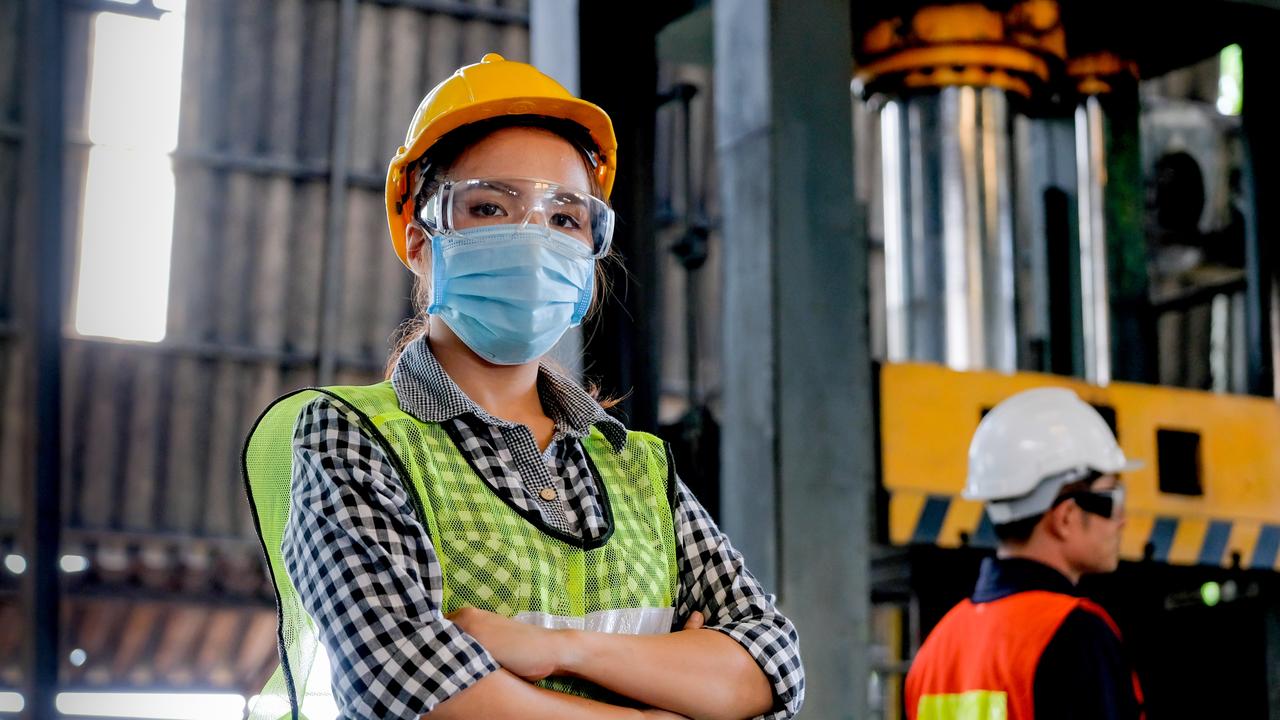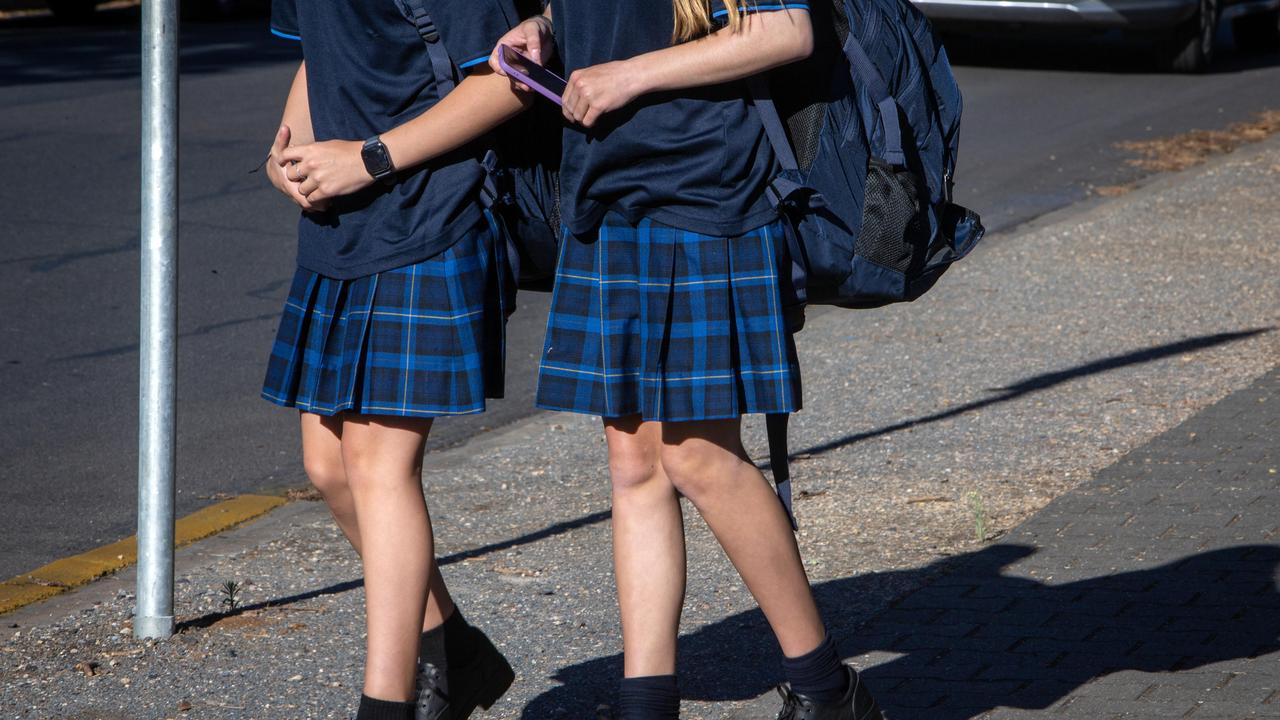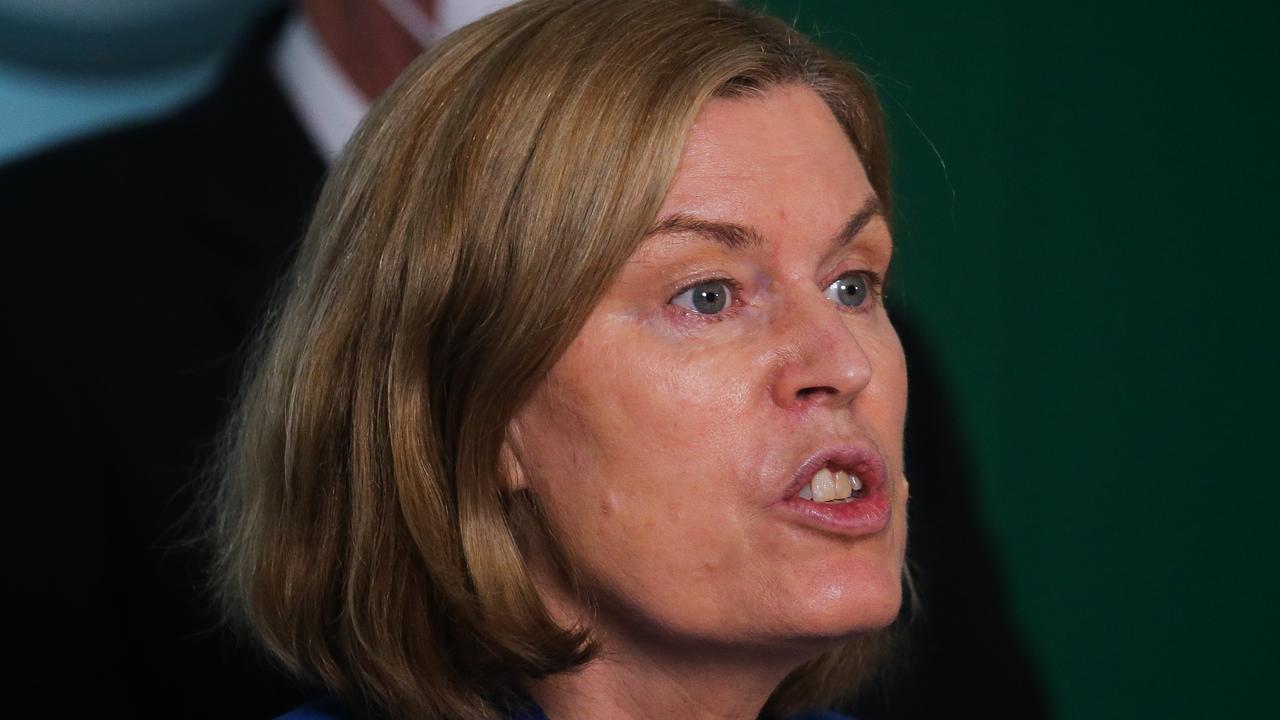What new NSW covid rules mean for workplaces
It’s no longer just customer-facing or frontline workers who have to wear a mask to their job. Here’s everything you need to know.
NSW workplaces have been thrown into disarray following tough new restrictions imposed on Wednesday following an outbreak of Covid-19 in Sydney.
Premier Gladys Berejiklian announced a spate of new rules after authorities uncovered 16 new cases of the coronavirus linked to the Bondi cluster, bringing the outbreak’s total to 37.
Those new restrictions include masks being compulsory indoors, only five visitors allowed in a house and dancing and singing is banned.
The new rules are for people in Greater Sydney, the Central Coast, the Blue Mountains, Wollongong and Shellharbour.
Here’s how it will affect you if you have a job.
RELATED: NSW announces sweeping restrictions

RELATED: NSW bans travel outside of Sydney
In the office
It’s no longer just customer-facing or frontline workers who have to wear a mask to their job.
Masks must now be worn in all non-residential indoor settings, including offices, even if social distancing is followed.
This rule kicks in from 4pm on Wednesday and will remain for a week, pending another announcement.
It’s the first time masks have been mandatory in offices in NSW.
“We want to ensure there is more widespread mask wearing. If you are in an indoor setting including a workplace, including Parliament House except if you are speaking, you should wear a mask,” Ms Berejiklian said on Wednesday.

You can still travel for work
Berejiklian has halted any non-essential travel outside of metropolitan Sydney in an attempt to stop the virus reaching regional areas.
“So unless it is essential travel, you should not be going outside metropolitan Sydney for the next week, and we apologise in advance that this impacts some people’s ability to travel during the school holidays,” she said.
However, there’s still two reasons you can leave the city: if you’re “visiting a relative in care or have to go to work”.
There are seven affected local council areas in Sydney: the City of Sydney, Waverley, Randwick, Canada Bay, Inner West, Bayside, and Woollahra.
The boundaries of the ‘Sydney metro area’ are defined as the Hawkesbury/Nepean River in the north/north west, and then the outer boundaries of the City of Penrith, Camden Council, the City of Campbelltown and Sutherland Shire.
Greater Sydney stretches from the Hawkesbury to the northern beaches regions in the north, to the Blue Mountains in the west, and the Wollondilly, Campbelltown and Sutherland regions in the south.

What if I’m going away soon and I work in a hot spot?
With school holidays fast apporaching, workers may find their travel plans scuppered by new border restrictions imposed on NSW.
Considering the City of Sydney encompasses the CBD, which has thousands of workers, many workers will be affected if they’re wanting to travel and may want to consider working from home.
To travel to some states, visitors are required to have been outside a hot spot for two weeks.
On Wednesday morning, Queensland joined Victoria and South Australia in slamming borders shut to certain areas of Sydney.
From 1am on Friday, Queenslanders returning home from City of Sydney, Waverley, Randwick, Canada Bay, Inner West, Bayside, and Woollahra will have to go into a mandatory 14 days of hotel quarantine.
NSW residents of those local government areas are not allowed in the state.
Victoria’s chief health officer Brett Sutton has deemed all seven areas as “red zones” effective from 1am on Wednesday.
Victorian residents who have travelled within one of those red zones can obtain a permit to re-enter the state but they must quarantine at home for 14 days.
Victoria has also listed the coastal city of Wollongong, south of Sydney, as an “orange zone” effective from 1am on Wednesday.
In South Australia, residents or workers from Waverley Council area or a Covid-19 exposure site are not allowed to enter the state.
The restrictions will apply to people who have been in any of those hot spots at any time during the past two weeks (but not before June 11, 2021).
In the Northern Territory, all new arrivals must fill in a border entry form.
The NT government declared the Woollahra and Waverley local government areas in NSW as hot spots.
Visitors must quarantine for 14 days.



